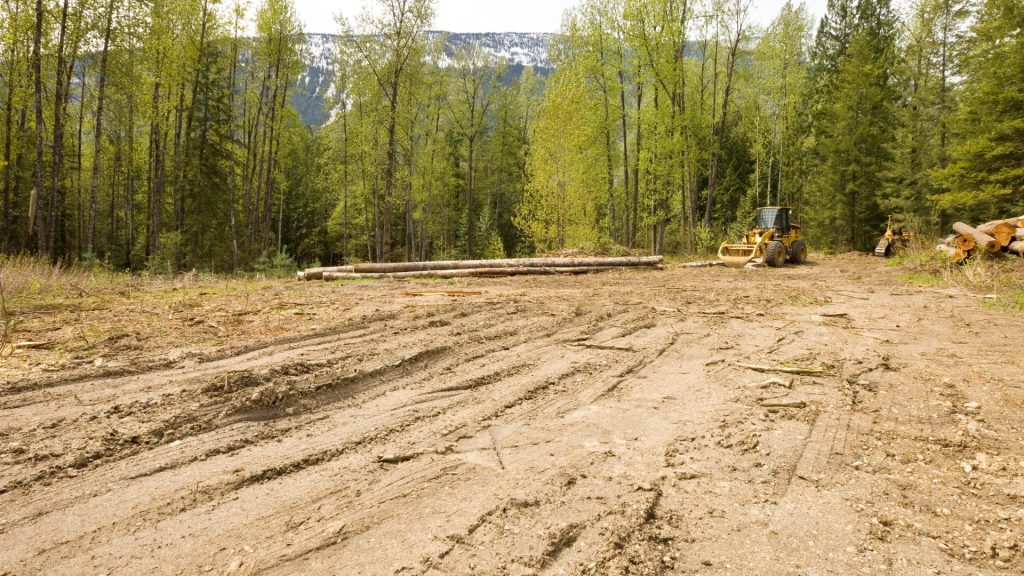Land clearing is a crucial step in preparing a piece of land for construction, agriculture, or landscaping. Whether you are a homeowner planning to build a new house or a developer working on a large-scale project, proper land clearing ensures safety, efficiency, and compliance with local regulations. This guide will cover everything you need to know about land clearing, including its benefits, methods, costs, and environmental impact.

What is Land Clearing?
Land clearing is the process of removing trees, shrubs, rocks, debris, and other obstructions from a plot of land. It makes the land suitable for development, prevents pest infestations, and improves soil health. The process must be done carefully to minimize environmental damage and comply with local laws.
Benefits of Land Clearing
- Creates Usable Land – Land clearing removes unwanted vegetation, making space for construction, farming, or landscaping.
- Prevents Pest Infestations – Overgrown areas attract rodents, insects, and other pests that can cause health hazards.
- Reduces Fire Risks – Dry vegetation and dead trees can become fire hazards. Clearing the land reduces the risk of wildfires.
- Enhances Soil Health – Removing excess vegetation can improve soil fertility and water absorption.
- Increases Property Value – A cleared and well-maintained property is more valuable and attractive to buyers.
Methods of Land Clearing
Several methods are used for land clearing, depending on the size of the land and the type of vegetation. Here are the most common techniques:
1. Manual Land Clearing
This method involves using hand tools like chainsaws, axes, and machetes to clear small areas. It is ideal for residential properties but can be labor-intensive and time-consuming.
2. Mechanical Land Clearing
Heavy machinery such as bulldozers, excavators, and mulchers are used for large-scale land clearing. This method is efficient but can be expensive and may require professional assistance.
3. Controlled Burning
In some cases, controlled burning is used to clear vegetation quickly. This method should only be performed by professionals, as it carries risks of fire spreading.
4. Chemical Land Clearing
Herbicides and chemicals can be used to kill unwanted vegetation. However, this method requires careful application to avoid environmental damage.
5. Mulching
Mulching machines shred trees and brush into small pieces that can be left on-site as organic material. This method is eco-friendly and helps retain soil nutrients.
Land Clearing Costs
The cost of land clearing depends on various factors, including:
- Size of the Land – Larger areas require more labor and equipment, increasing costs.
- Type of Vegetation – Dense forests or large trees are more expensive to clear than grasslands.
- Equipment Needed – Hiring heavy machinery can add to the overall cost.
- Location and Accessibility – Remote locations or uneven terrain may require additional work.
On average, land clearing costs between $500 and $5,000 per acre, depending on these factors.
Environmental Impact of Land Clearing
While land clearing is necessary for development, it can impact the environment. Here are some considerations:
- Soil Erosion – Removing vegetation can lead to soil erosion and loss of nutrients.
- Habitat Destruction – Wildlife may lose their natural habitat due to deforestation.
- Water Contamination – Improper clearing can lead to runoff, polluting nearby water sources.
How to Minimize Environmental Impact
- Use Sustainable Clearing Methods – Choose eco-friendly methods like mulching or selective clearing.
- Follow Local Regulations – Ensure that land clearing is done legally and responsibly.
- Replant Trees – Planting new trees can help restore the environment.
- Erosion Control – Use barriers and cover crops to prevent soil erosion.
Steps to Prepare for Land Clearing
- Obtain Permits – Check with local authorities to ensure compliance with land clearing regulations.
- Assess the Land – Conduct a survey to identify obstacles and determine the best clearing method.
- Hire Professionals – For large-scale projects, hiring a land clearing company can ensure efficiency and safety.
- Plan for Waste Disposal – Decide how to manage cleared debris, whether through recycling, burning, or disposal.
Conclusion
Land clearing is an essential process for making land usable and safe for development. Choosing the right method, understanding costs, and minimizing environmental impact are crucial for a successful project. Whether you are clearing land for a new home, farm, or commercial project, proper planning and professional assistance can ensure a smooth and eco-friendly land clearing process.

